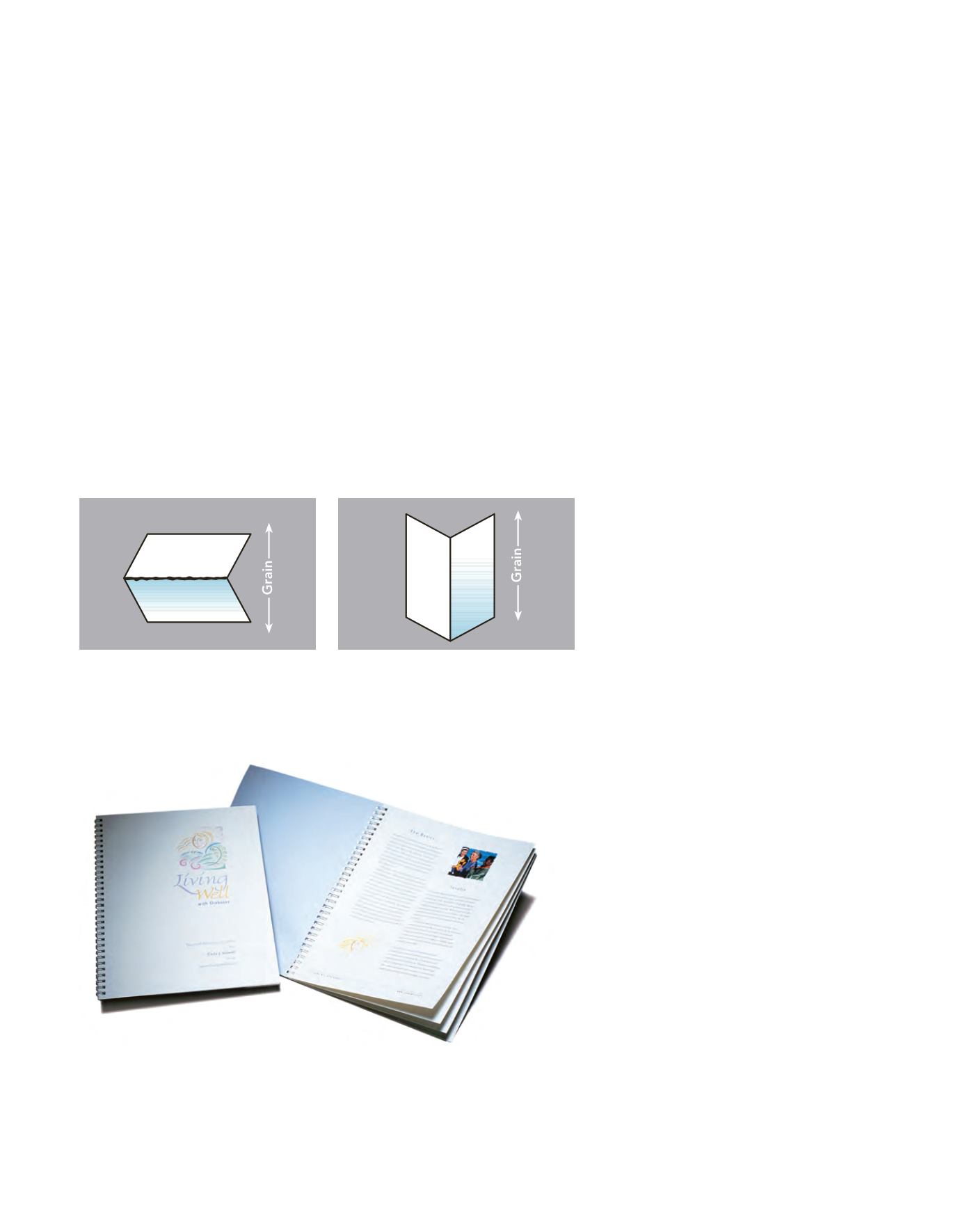
Imposition, folding and finishing
With the Kodak NexPress press, you
can set up your documents as 2-page
reader spreads, or 1- or 2-page
printer spreads. Automatic imposi-
tion software handles the setup and
proper sequencing, but it’s still a good
idea to give your printer a mock-up of
your layout to avoid any possible mis-
understandings. Remember to allow
for the proper amount of space in the
gutter for the binding process you will
be using.
When it comes to folding, one
concern with electrophotographic
imaging systems is cracking in heavy
coverage areas. You can reduce the
possibility of cracking by designing
your job with less coverage on areas
to be folded. Whenever possible,
design your job to fold with the grain
of the paper, not against the grain.
For best results, score all folds. If you
laminate the final pages—especially
covers—you can eliminate cracking
and provide a durable, finished look.
All output from a Kodak NexPress
press can be varnished, laminated,
and finished with an aqueous coating
or a non-oil based UV coating.
In addition, some of the presses
have a Kodak NexPress fifth imaging
solution for clear overcoating with
Kodak NexPress clear dry ink. Ask
your printer.
Trimming and binding
Virtually all commonly used binding
methods are available for use with
digitally printed documents. If you’re
taking advantage of the fast turn-
around possible with digital printing
though, you’ll probably want to keep
your binding options simple to save
time. The most efficient way to finish
your digital project is with a near-line
finishing system. Of course, all exist-
ing off-line finishing equipment
can also be used. Be sure to check
with your printer for specific
finishing options.
A fold that runs in the same direction as the
grain will be neater and smoother with minimal
or no cracking.
Every paper has a grain, which is created when
it’s manufactured. Folding against the grain can
cause cracking.
Keys to a clean finish
Designing for Success
11


